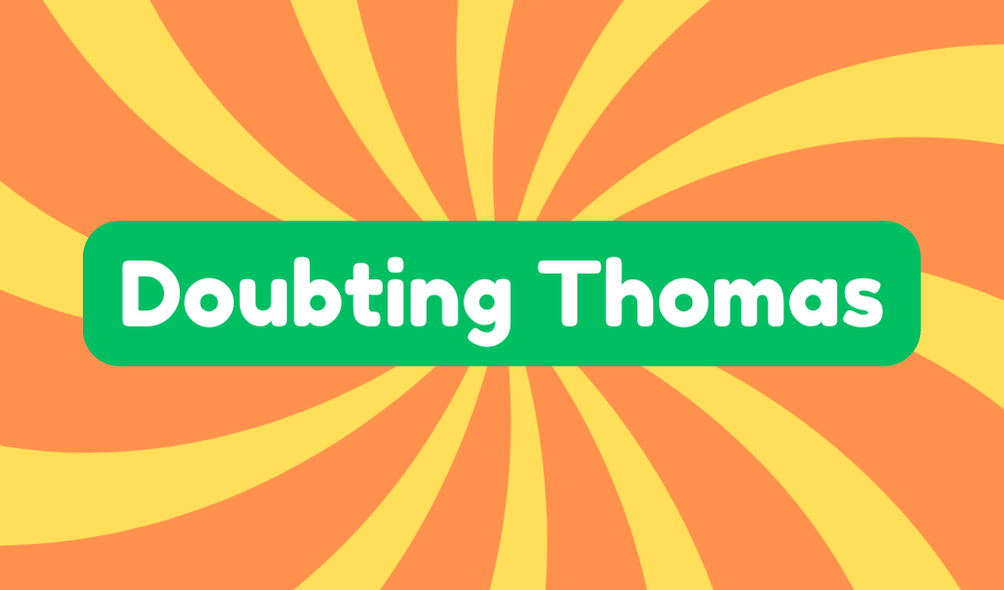"Doubting Thomas" describes someone who demands proof before accepting claims. This term comes from the biblical Apostle Thomas, who questioned Jesus's resurrection until he saw tangible evidence. Introduced metaphorically in 1883, it symbolizes skepticism's role in understanding beliefs. For example, you might say, "He's a doubting Thomas; he won't believe anything without hard facts." In today's world, where misinformation flourishes, being a doubting Thomas fosters critical thinking and informed decision-making. This mindset is essential as it encourages questioning and verification in a society overwhelmed by claims, so you might find it relevant to examine how this concept plays out in modern discourse.
Synonyms
When you think of a "doubting Thomas," several synonyms come to mind that capture the essence of skepticism. These words reflect various skepticism traits, emphasizing critical thinking and the need for solid evidence before belief. You might consider these alternatives:
- Skeptic – Someone who questions accepted beliefs and requires proof.
- Cynic – A person who distrusts the motives behind statements or actions.
- Pessimist – An individual inclined to see the negative side, often needing reassurance.
- Questioner – One who seeks answers and verification before acceptance.
These terms encourage a mindset that prioritizes inquiry and rational analysis. Embracing such language can enhance your discussions and promote a culture where critical thinking thrives, challenging blind acceptance. This approach establishes a foundation for deeper understanding in innovative contexts.
Example of Sentences
While the terms like skeptic and cynic highlight the nuances of disbelief, it's important to see how "doubting Thomas" manifests in everyday language. You might encounter this phrase in various contexts, often framing a skeptical dialogue or evidence debate. Here are some examples:
- "He's such a doubting Thomas; he won't believe the project's success until he sees the numbers."
- "You're being a true doubting Thomas if you question every claim without any firsthand experience."
- "The team struggles to overcome the doubts raised by the doubting Thomases in our group."
- "We need evidence for any new claims, or more doubting Thomases will arise."
These sentences illustrate how skepticism shapes conversations and highlights the constant demand for proof in our pursuits.
Origin
The phrase "doubting Thomas" stems from the Biblical Apostle Thomas, who is famously associated with skepticism. This reference comes primarily from the Gospel of John, where Thomas refuses to believe in Jesus's resurrection until he sees physical proof. This act reflects a critical moment in biblical interpretation, revealing the historical significance of doubt and faith in religious teachings. Jesus doesn't rebuke Thomas; instead, he offers the evidence Thomas demands, highlighting the balance between belief and proof. The term's metaphorical usage first appeared in 1883, encapsulating the essence of skepticism. It serves as a reminder that questioning can lead to deeper understanding, challenging you to reconsider how you approach claims in a world filled with noise and uncertainty.
Collocations
Having explored the origin of "doubting Thomas," it's important to recognize how this phrase collocates with various terms that further illustrate its meaning. Understanding these collocations can help you grasp the usage patterns surrounding skepticism and doubt present in everyday language. Here are four key collocations to reflect on:
- Doubting Thomas moment – refers to a specific instance of skepticism.
- Doubting Thomas attitude – describes a persistent stance of disbelief.
- Doubting Thomas behavior – highlights actions prompted by skepticism.
- Doubting Thomas mindset – reflects a foundational outlook of requiring proof.
These expressions not only reinforce the concept but also provide avenues to challenge conventional beliefs while traversing a world filled with claims waiting for your scrutiny.
How to Use in Everyday Language
Using "doubting Thomas" in everyday language can effectively convey skepticism and the need for proof in various contexts. When discussing innovative ideas or challenging claims, it's crucial to cultivate skepticism awareness. Here's how you might put it into practice:
| Context | Application | Example Sentence |
|---|---|---|
| Conversations | Addressing doubts | "Don't be a doubting Thomas; try the new method!" |
| Team Meetings | Evaluating new strategies | "We need to be open, not just doubting Thomas, about this plan." |
| Casual Chats | Expressing skepticism | "I'm a bit of a doubting Thomas when it comes to those claims." |
Why Is It Still Relevant Today?
Skepticism's role in modern discourse keeps the term "doubting Thomas" highly relevant today. In a world overloaded with information, you may find yourself grappling with skeptical attitudes. Questions about credibility often arise, especially with the prevalence of misinformation. Trust issues are everywhere, from social media claims to expert opinions. Embracing your inner doubting Thomas means demanding evidence and verification before accepting new ideas. It's not just about disbelief; it's about fostering critical thinking. You can navigate through this information jungle by maintaining a cautious, questioning mindset. Being a modern doubting Thomas helps you challenge narratives that may lack substantiation, ultimately leading to more informed decisions. So, question everything, and don't shy away from seeking proof.







